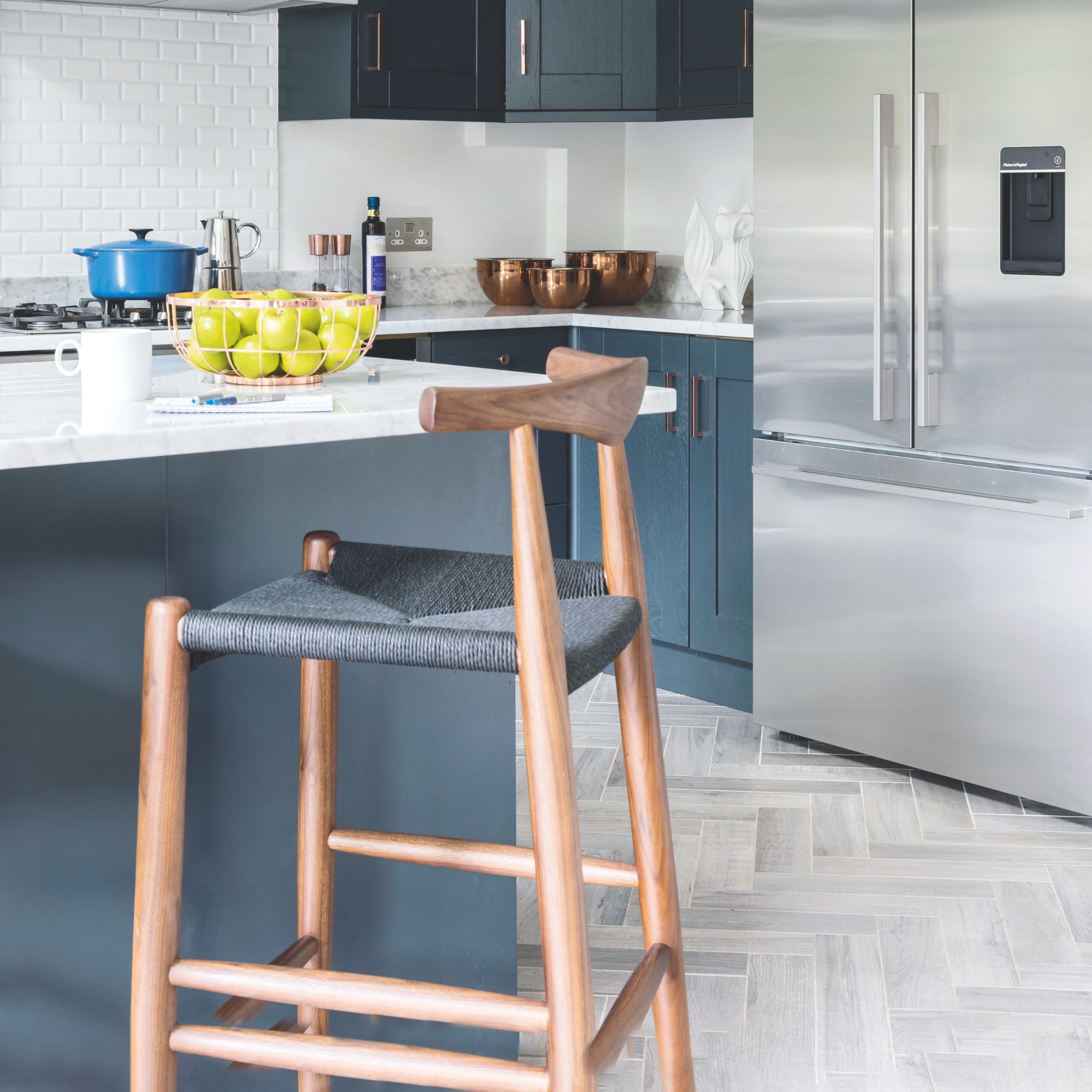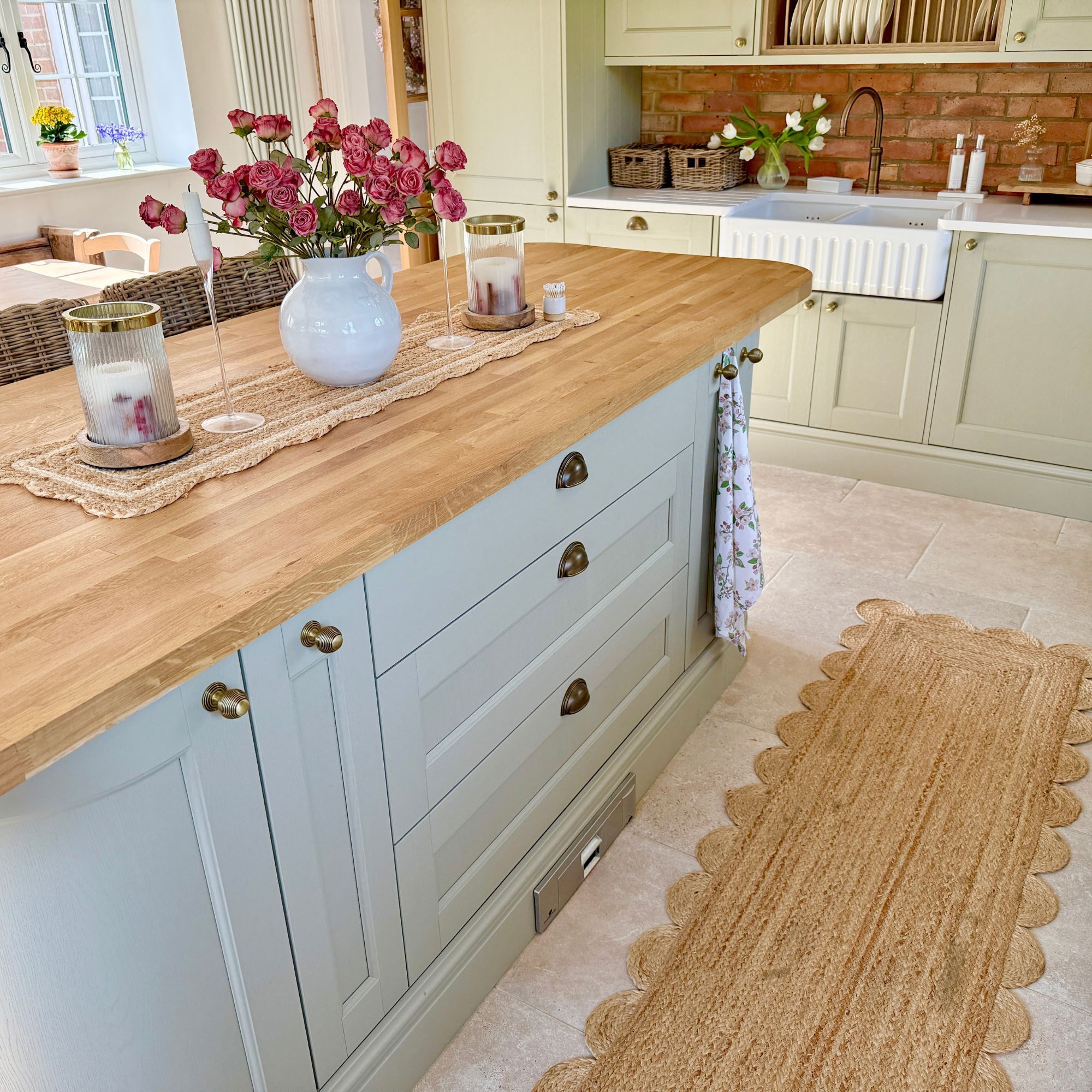
As Ideal Home’s Vacuum Expert, I really thought I’d seen every type of vacuum out there. So, you can imagine my surprise when I discovered that plinth vacuums are a thing - and an ingenious thing at that.
While I already knew that you can hide a heater in a plinth in certain areas of the home, what I didn’t realise was that these plinths (what some people call kick boards or kick plates) can also rival the best vacuum cleaners when you have the right tools at your disposal.
Helping you maintain a clean kitchen and keep your floors in tip-top condition, plinth vacuums are also relatively affordable and easy to install. But what is a plinth vacuum? Well, I’ve got all of the details you need so you can add one to your kitchen ASAP.
What is a plinth vacuum?
Designed primarily by Sweepovac, plinth vacuums essentially offer the power of a full-size vacuum cleaner built into a compact space, and they’re often used in caravans, motorhomes, and smaller homes. But they’re becoming increasingly common in kitchens across the UK, as they offer a powerful vacuum solution that blends seamlessly into your cooking and living space.
I was first introduced to the power of a plinth vacuum when scrolling through Instagram and stumbling across a post by Aimee & Sean, content creators and renovators behind @TheCountryReno. At first, it looked like Aimee was simply sweeping her kitchen floors next to a regular plinth heater.
However, I quickly realised that she was actually sweeping the debris from her floors towards the plinth and into the convenient vacuum installed within her kickboards. With a tap of her foot, the debris was then sucked into her kitchen island. And that is the beauty of the plinth vacuum - quick and discreet kitchen cleaning without having to bend down or use a hefty appliance.
These plinth heaters aren’t just for sweeping your crumbs into, though. They also come with a telescopic extension pipe and a range of accessories (very similar to your regular vacuum cleaner accessories), so you can clean everything from your worktops to the smaller gaps and crevices in your kitchen.

They don’t require an extensive installation process either. Although you’ll need to cut into your current kickboards to house a plinth heater and have a plug socket nearby, installation should take less than ten minutes. And the reusable vacuum bags only have to be emptied every now and then.
In fact, Aimee noted in late February 2025 that she hadn’t emptied the bag since September 2024, which means you won’t have to empty it as often as you would empty a vacuum cleaner.
She told me, ‘I am obsessed with my Sweepovac. It makes quick cleanups so much easier. The kitchen is the heart of our home, where we eat, relax, and hang out, and after I spotted one in my hairdresser's, I knew it would be perfect in my new kitchen. It was easy to install - our central island had electricity going to it anyway, so we asked the electrician to add another plug, which sat at floor level.’

She adds, ‘Then plugged the Sweepovac in underneath the units, made a small cutout for the vacuum to slide in to and screwed the faceplate on. I can then just slide it out whenever the bag needs emptying. It cost me about £250 on eBay, so less than a normal stick vacuum (though we still have one of those for other rooms).’
Of course, you can choose to have as many plinth vacuums in your kitchen as you want, but experts warn that plinth vacuums may not be sufficient to keep a larger kitchen clean at all times.
Henrique Conceicao, Area Manager at Total Clean, says, ‘For things like bigger messes or heavier dirt, you’ll still need to grab your main vacuum. But if you’re short on storage or just want to keep your kitchen tidy without the clutter of another gadget, a plinth vacuum could be a good option.’
With a 1200-watt motor, this plinth vacuum also has a HEPA filter - much like the best cordless vacuums. Plus, the flexible hose extends from 10 ft to 33 ft for versatile cleaning.
Brooms can often leave debris behind, but this floor blade would be the perfect companion to your plinth vacuum. After all, the rubberised blade and tapered edge will leave nothing behind.
If you're looking for a slightly larger plinth vacuum, this is another option to consider. The hose is also longer, so this would suit those who have a bigger kitchen.
FAQs
How does a plinth vacuum work?
A plinth vacuum essentially works just as a regular vacuum cleaner would - it sucks up nearby dust, debris, and crumbs. You can either use the kick pan button to turn it on, or you can connect an extendable hose for more targeted cleaning.
The plinth vacuum then sucks the debris into a reusable bag within the kickboards of your space, which you can then remove and empty when needed.
What is the difference between a kickboard and a plinth?
A plinth is the same as a kickboard, and they can be found underneath kitchen cabinets. They are generally used to conceal any pipework, supports, or joints needed for a practical kitchen. They also seamlessly connect the floor to the units without compromising on the aesthetics of the space.
They’re a little different to toe-kicks, which are recessed further back to create the illusion that your kitchen cabinets are floating.
I'm sold on plinth vacuums... are you?







